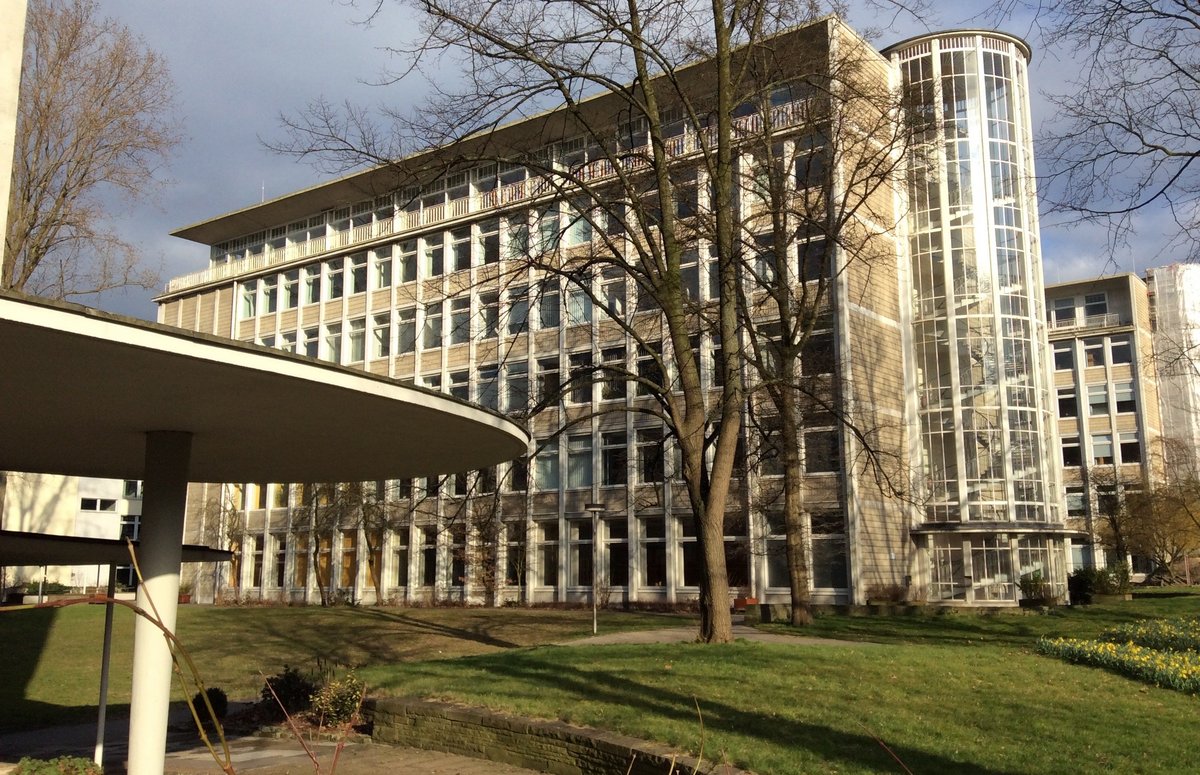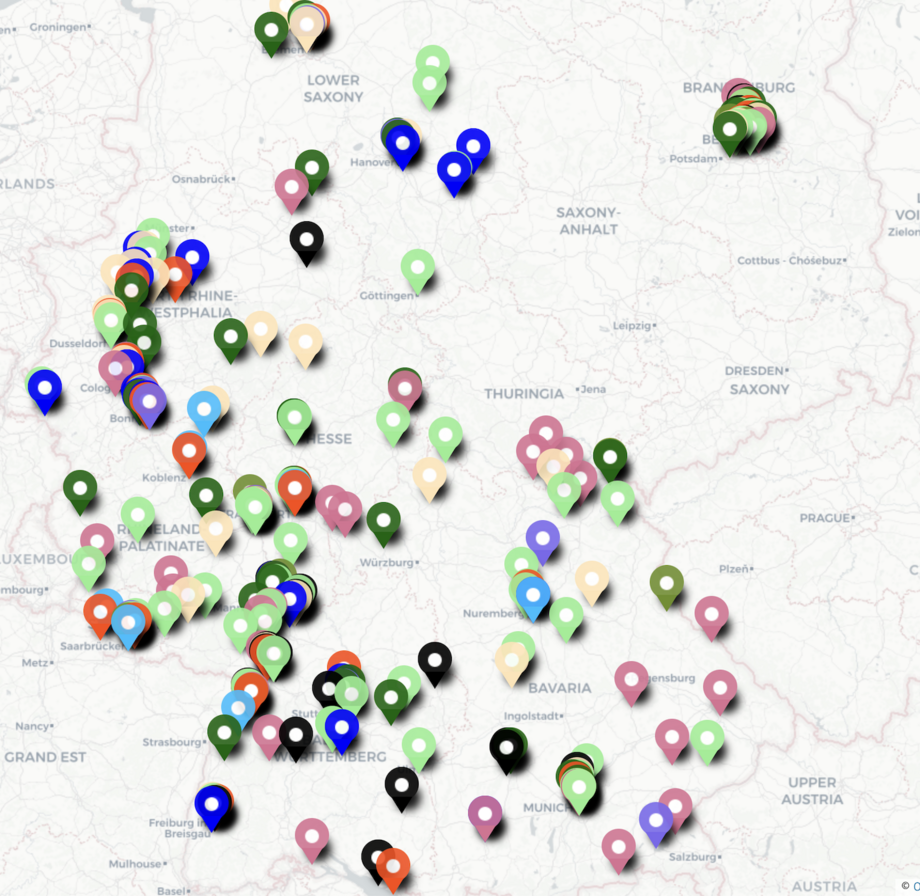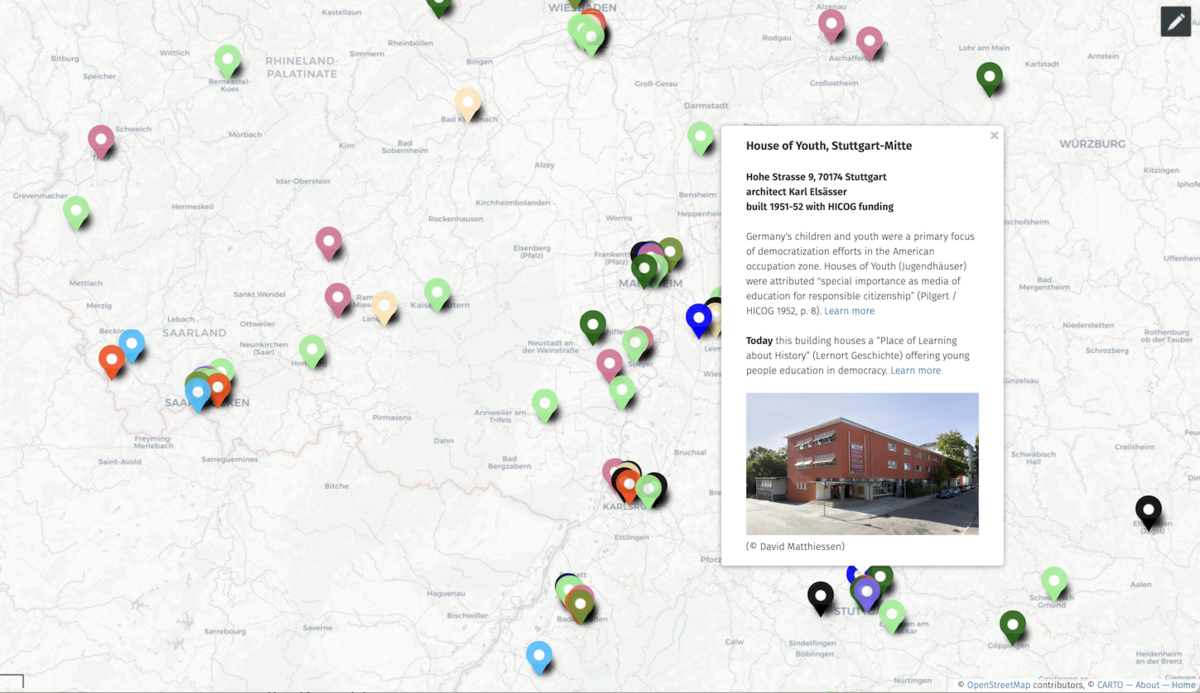Buildings of the Allied Occupation in Western Germany (1945-1955) The heritage of democratization in Germany's built landscape


Grant period:
1 April 2022 to 1 January 2027
In response to troubling developments in political discourse in recent years, German elected officials and citizens' organizations have called for action to renew public commitment to democracy, Europeanism and internationalism. One of the activities being expressly encouraged is the discovery of so-called "Orte der Demokratiegeschichte" in Germany's built environment and their development into "Lernorte der Demokratie".
Against this background, the project will explore the historical legacy of built structures in Germany that attest to the Western Allies' efforts to 'democratize' their former enemy after the Second World War and to forge a European as well as a larger Western community based on shared cultural values. So far this legacy – which includes buildings for education and recreation, for science, history and art, for religion, for health and social welfare, and not least for grass-roots political organization and action – remains largely invisible to the public and little known to historians. The project will:
- identify and document these structures as they exist in the built environment today
- research and assemble the history of their conception and construction
- contextualize this history within the joint Allied and German democracy-building effort of the occupation period (1945-1955)
- analyze the new corpus of sites in terms of their potential for valorization as "Orte der Demokratiegeschichte" by applying theories of heritage practice and performance current in the field of Heritage Studies.
In so doing, the project will fill a significant gap in historical knowledge about German-Allied relations during the formative years of the modern Federal Republic. It will also add needed scope and nuance to the topography of "Orte der Demokratiegeschichte" currently being generated by German institutions – a topography that so far lacks sites of American-German, British-German and French-German cooperation in building Germany's post-war democracy, and thereby risks missing a key opportunity to achieve some of this effort's core programmatic goals. At the same time it will examine critically the notion that heritage sites can serve as "models" for thought and action, and will thereby advance the international discourse on the political role and functioning of cultural heritage.
work in progress: Democratization Map of Germany
The project team is currently developing an interactive “Democratization Map of Western Germany”. It will mark buildings connected to the Western Allies’ democratization efforts during the military and civilian Occupation and in this way will visualize the initial results of our research as well as make them accessible to a broader public. A preview is visible here.
When clicked, each pin opens a pop-up window displaying basic information about the site as well as a thumbnail photograph. The aim is to supplement this information with additional material, including an outline of each building’s history, details on its significance to the Allied democratization effort, and its current status and function.
Pins marking the sites are colour-coded according to the categories of building activity identified so far:
- Education
- Youth
- Recreation / Sports / Gardens
- Health and Social Welfare
- Arts and Culture
- Religion
- Housing
- Historic Monuments / Memorials
- Politics / Government / Public Administration
- Military / Infrastructure
To date approximately half of the 600+ sites so far identified have been entered into the map. It remains a work in progress, but even in its unfinished state, it makes immediately visible the scale and scope of building activity promoted by the occupation authorities in support of the democratization effort during the period 1945-55. The map is also revealing some interesting patterns, especially when individual building categories are selected for viewing.
research-led teaching
Internationales Forschungsatelier zur Architekturfotografie. „Man weiß nur, was man sieht“ - Bauten und ihre Abbildungen als Wissensquelle über die deutsch-französischen Beziehungen im Saarland nach 1945, together with ENSA Strassbourg and partners at the htw Saar and the Landesdenkmalamt des Saarlands. 16-19 September 2024 in Saarbrucken. Funding support from the Deutsch-Französichen Hochschule.
Study Project Heritage Making at Historic Sites: Processes, Practices and Politics, Master's programmes in World Heritage Studies (WHS), Heritage Conservation and Site Management (HSCM), and Architecture, BTU Cottbus-Senftenberg, Summer Semester 2023.
The results of the Study Project are currently being prepared for publication and will be available here for download in 2024.
project team
Dr. phil. Antoine Beaudoin
Postdoc
Building 2B, Room 0.22
+49 (0) 355 69 3117 (Office of the Chair)
Antoine.Beaudoin(at)b-tu.de
Anna Mönke
Research Assistant, January 2025 -
anna.moenke(at)b-tu.de
past project team members
Danica Petrović M.Sc.
Research Assistant, April 2022 to September 2023
project lead
Prof. Dr. phil. habil. Johanna M. Blokker
Chair in Architectural Conservation
Institute of Building History and Art History
Brandenburg University of Technology Cottbus-Senftenberg
Building 2B, Room 0.12
Konrad-Wachsmann-Allee 4
03044 Cottbus
Tel: ++49 355 69 3992
Tel: ++49 355 69 3117 (Office of the Chair)
E-mail: Johanna.Blokker(at)b-tu.de


